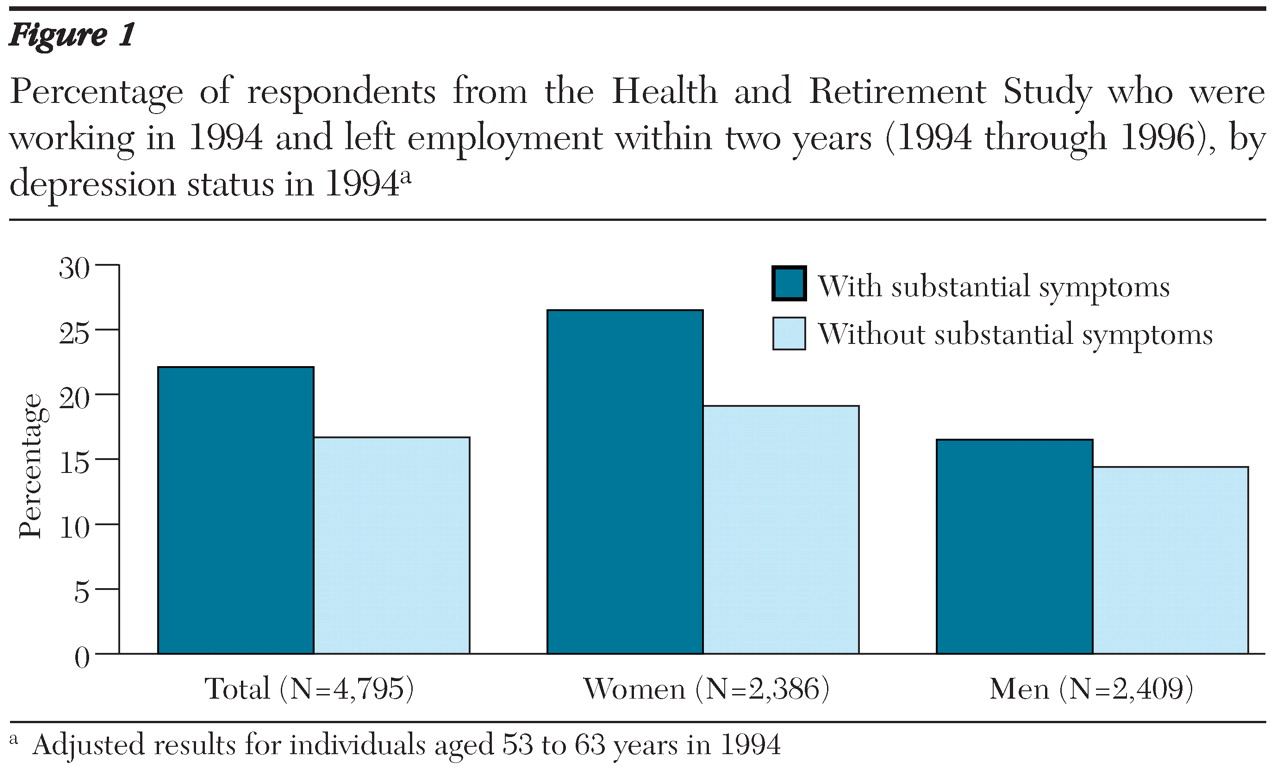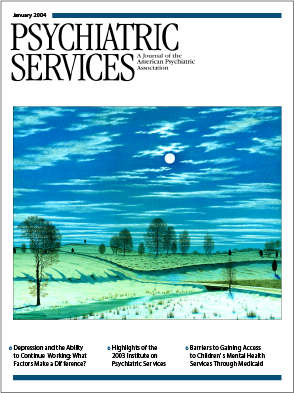Numerous cross-sectional analyses have shown that individuals with mental illness are less likely to be employed, and many psychological studies have demonstrated that the loss of employment is a risk factor for developing depression. It remains less clear, however, whether depression affects job retention among the employed.
We analyzed data from the Health and Retirement Study, a nationally representative longitudinal survey of individuals aged 51 to 61 in 1992 (
1). We examined 1994 data for the baseline and 1996 data for labor market outcomes. Depression was assessed at baseline with a short eight-item version of the Centers for Epidemiological Studies Depression (CES-D) scale, using a cutoff point of four or more symptoms, which corresponds to the traditional cutoff point of 16 or more symptoms in the full 20-item CES-D score (
2). We analyzed data from respondents who worked in 1994 and who reported a working status in 1996 (N=4,799). We then determined how many persons responded negatively in 1996 to the question: "Are you currently working for pay?"
Descriptively, 115 out of 458 individuals with substantial depressive symptoms (25.1 percent) left employment within two years, compared with 16.5 percent (716 out of 4,341) of those without depression (t=4.09, df=530, p<.001). Because these groups also differed in other dimensions, we used multivariate logistic regression analysis to control for sex, age, race or ethnicity, marital status, education, family income, net wealth, number of years worked at the longest-held job, smoking status, number of persons in the household, and whether the respondent worked full-time or part-time at baseline. Because some persons had missing data, our sample size decreased to 4,795. We further stratified the data by sex and ran multivariate logistic regressions for women and for men. Adjusted results are shown in
Figure 1.
Among the 2,386 women in the sample, having depressive symptoms was strongly associated with leaving employment; 26.5 percent of women with depression left employment, compared with 19.1 percent of women without depression (odds ratio [OR]=1.57, p=.002). For the 2,409 men in the sample, the difference was much smaller—16.5 percent and 14.4 percent, respectively—and not statistically significant. Of the 831 respondents who left the labor force during 1994 to 1996, 7.6 percent became unemployed, 1.8 percent partially retired, 73.4 percent retired, 6.1 percent became disabled, and 11.1 percent left the labor force for other reasons. The only substantial difference we found between men and women was that men tended to consider themselves retired (79.3 percent) and women tended to report they were out of the labor force for other reasons (17.1 percent).
Our study suggests that depression takes a higher toll among older women in the workforce. Given the central role of employer-sponsored health insurance in our health care system, leaving employment because of depression may worsen access to care for depressed individuals.
Acknowledgment
This research was funded by grant R01-MH-62124 from the National Institute of Mental Health.


